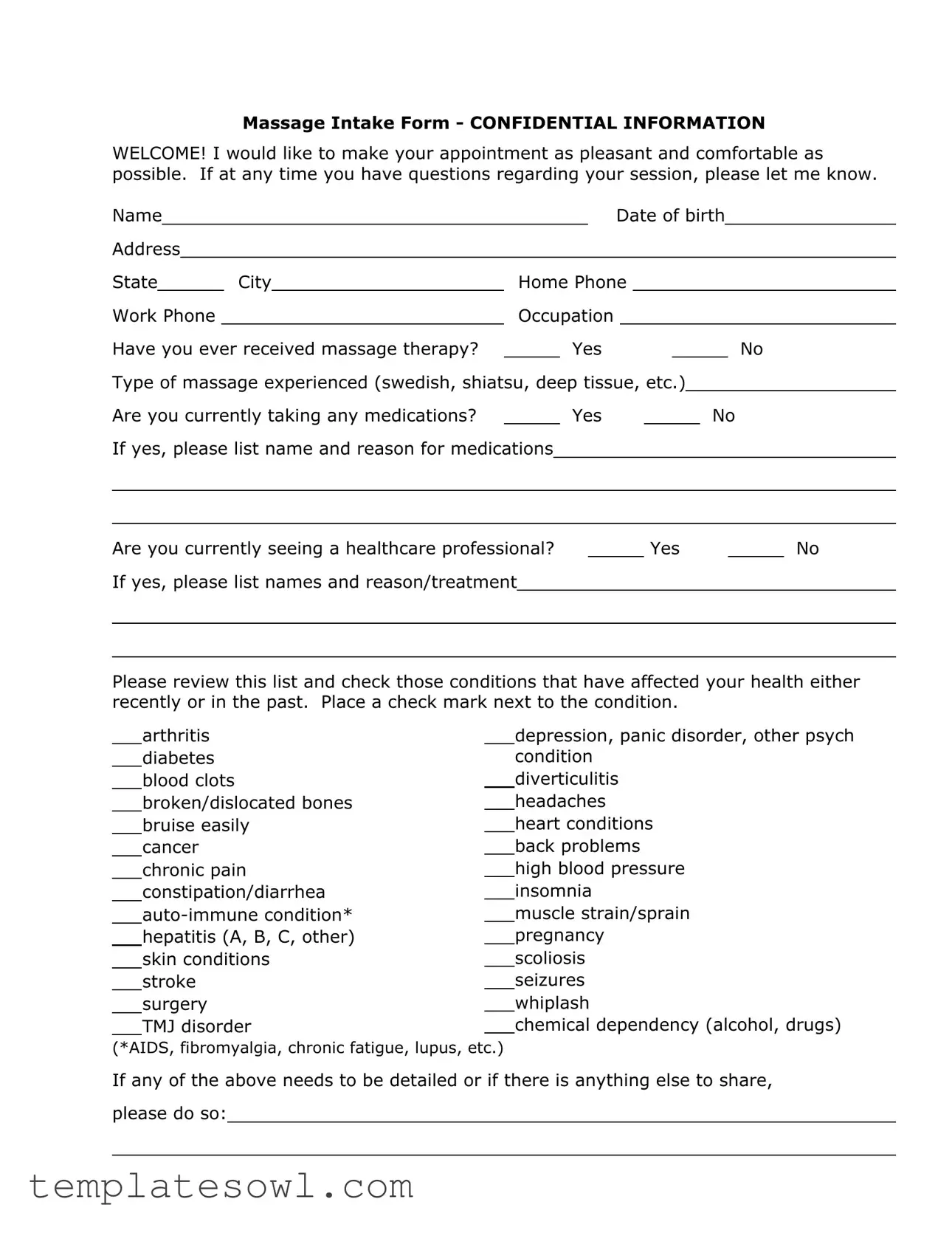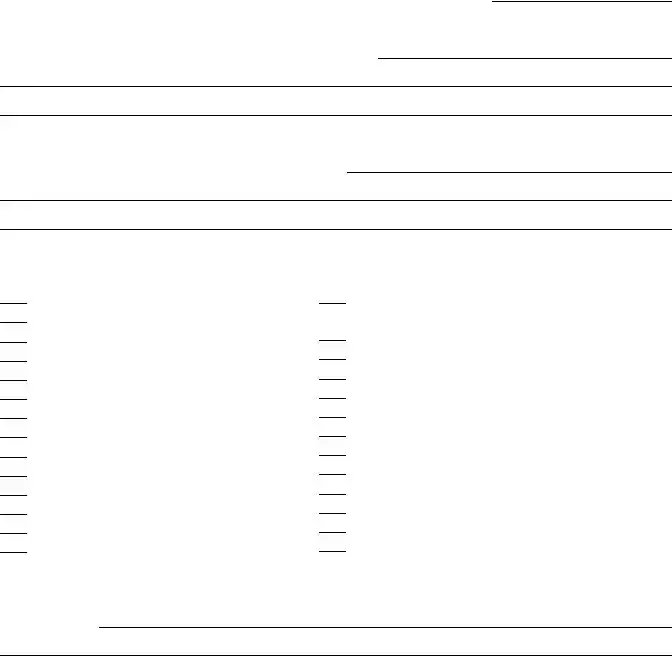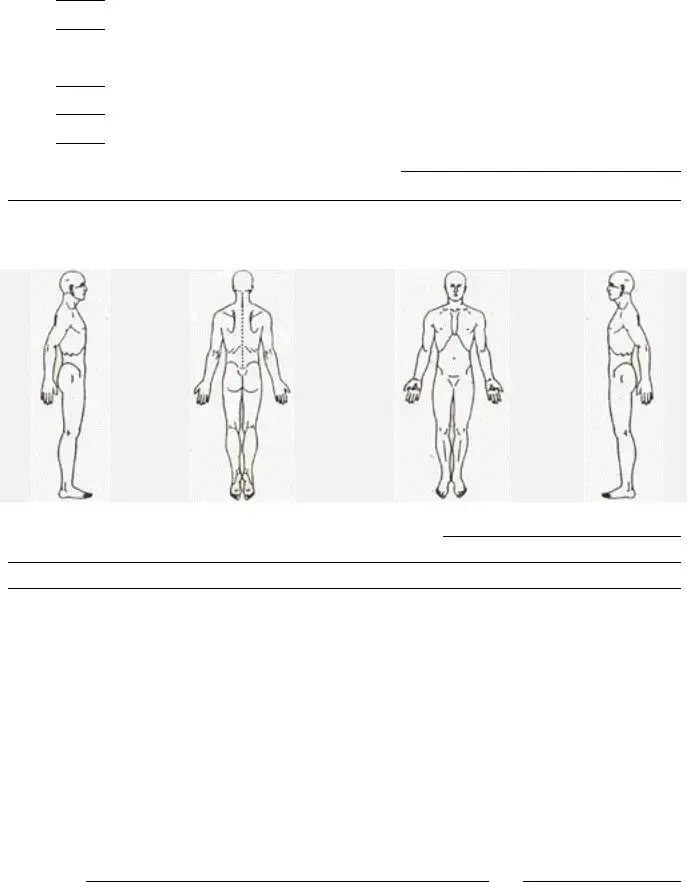Massage Intake Form - CONFIDENTIAL INFORMATION
WELCOME! I would like to make your appointment as pleasant and comfortable as possible. If at any time you have questions regarding your session, please let me know.
Name |
|
|
|
|
|
Date of birth |
|
|
|
|
|
|
|
|
|
|
|
|
|
|
Address |
|
|
|
|
|
|
|
|
|
State |
|
City |
Home Phone |
|
|
|
|
|
|
|
|
|
|
|
Work Phone |
|
|
Occupation |
|
|
Have you ever received massage therapy? |
|
Yes |
|
No |
Type of massage experienced (swedish, shiatsu, deep tissue, etc.)
Are you currently taking any medications? |
|
Yes |
|
No |
If yes, please list name and reason for medications
Are you currently seeing a healthcare professional? |
|
Yes |
|
No |
If yes, please list names and reason/treatment
Please review this list and check those conditions that have affected your health either recently or in the past. Place a check mark next to the condition.
arthritis diabetes blood clots broken/dislocated bones bruise easily
cancer chronic pain constipation/diarrhea auto-immune condition* hepatitis (A, B, C, other) skin conditions stroke
surgery TMJ disorder
(*AIDS, fibromyalgia, chronic fatigue, lupus, etc.)
depression, panic disorder, other psych condition
diverticulitis headaches heart conditions back problems high blood pressure insomnia
muscle strain/sprain pregnancy scoliosis seizures whiplash
chemical dependency (alcohol, drugs)
If any of the above needs to be detailed or if there is anything else to share,
please do so:
Do you have any of the following today:
|
|
|
|
|
|
|
|
skin rash |
|
cold/flu |
|
open cuts |
|
severe pain |
anything contagious |
|
injuries/bruises |
|
|
Do you have any allergies to:
medications |
|
foods (nuts, etc.) |
environmental allergens (dust, pollen, fragrances)
reactions to skin care products
If any of the above are checked, please give details:
Are you wearing: |
|
contact lenses |
|
hearing aid |
|
hairpiece |
Please indicate with an (X), if any, the areas in which you are feeling discomfort:
What are your goals/expectations for this therapy session?
The following sometimes occurs during massage. They are normal responses to
relaxation. Trust your body to express what it needs to:
need to move or change position ! sighing, yawning, change in breathing
stomach gurgling ! emotional feelings and/or expression
movement of intestinal gas ! energy shifts ! falling asleep ! memories
Please read the following information and sign below:
1.I understand that although massage therapy can be very therapeutic, relaxing and reduce muscular tension, it is not a substitute for medical examination, diagnosis and treatment.
2.This is a therapeutic massage and any sexual remarks or advances will terminate the session and I will be liable for payment of the scheduled treatment.
3.Being that massage should not be done under certain medical conditions, I affirm that I have answered all questions pertaining to medical conditions truthfully.
Signature:Date


